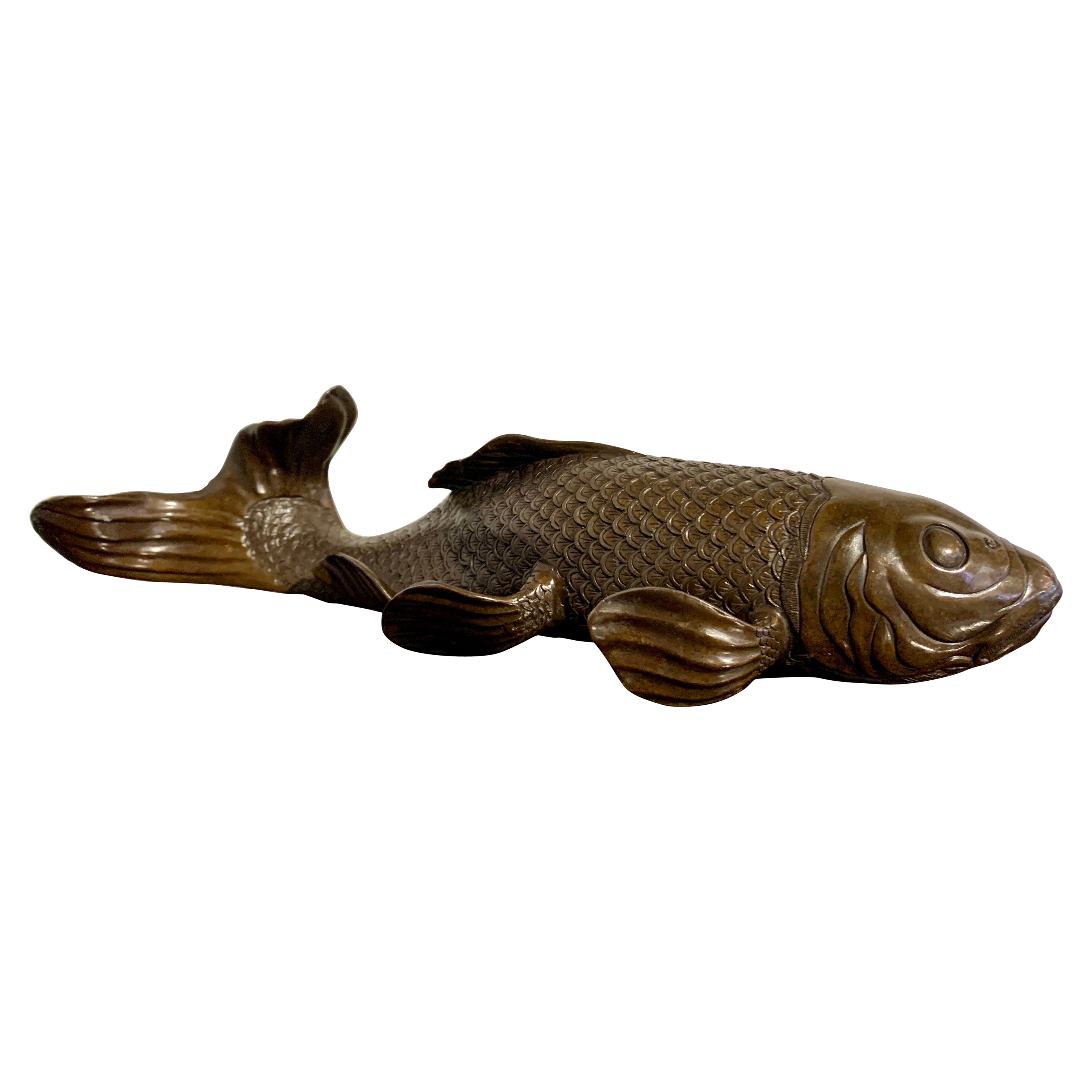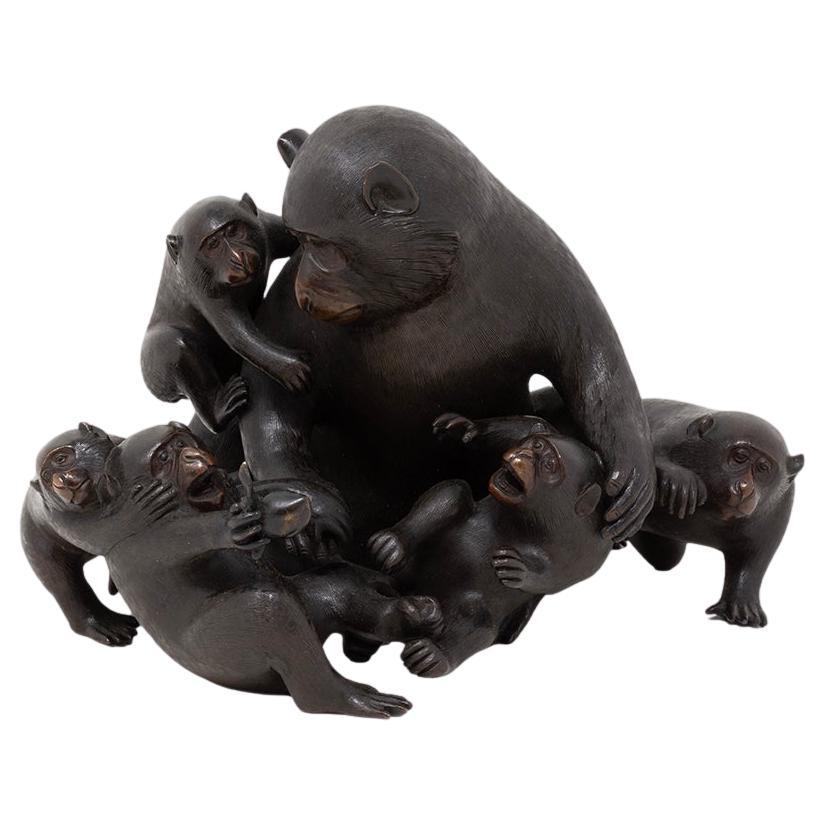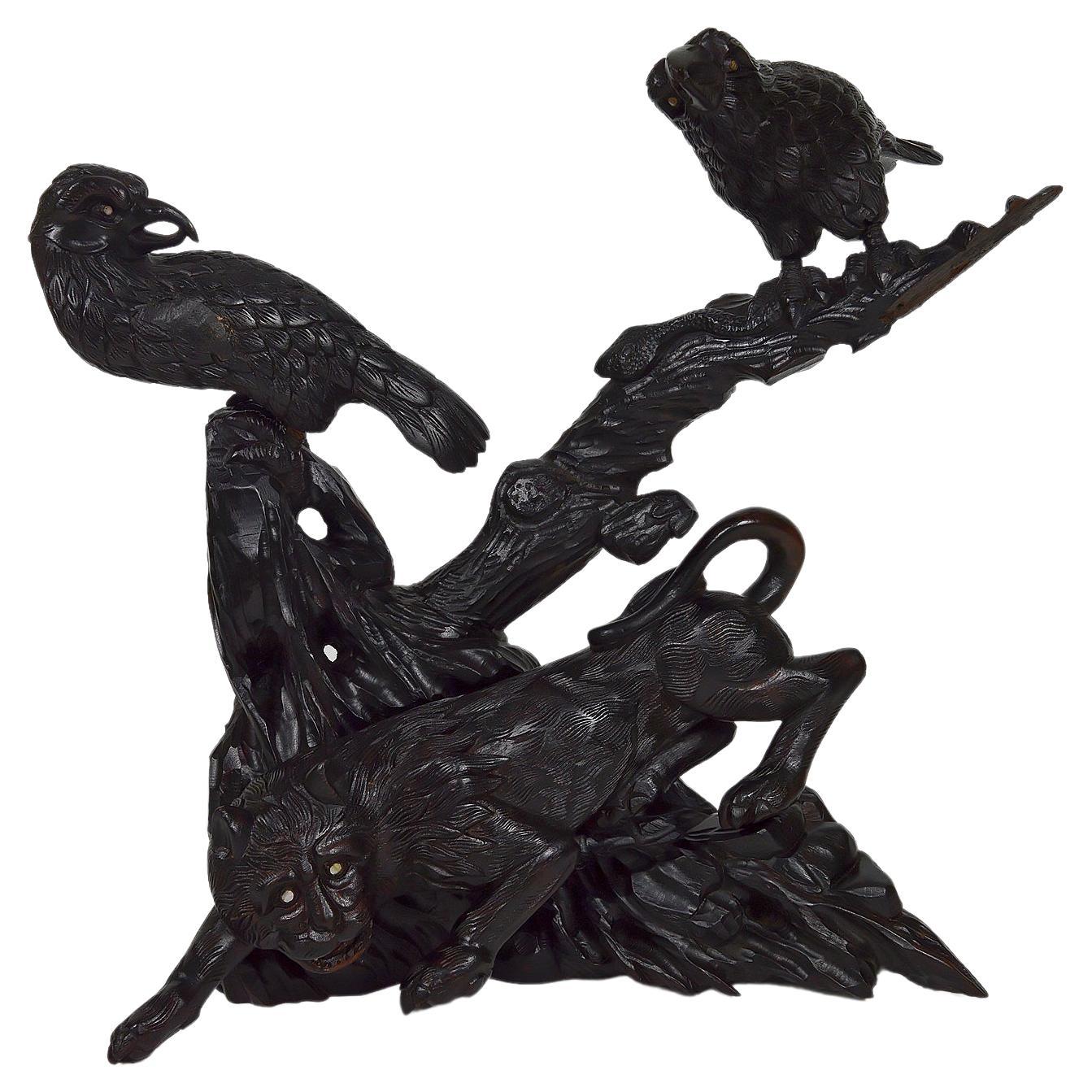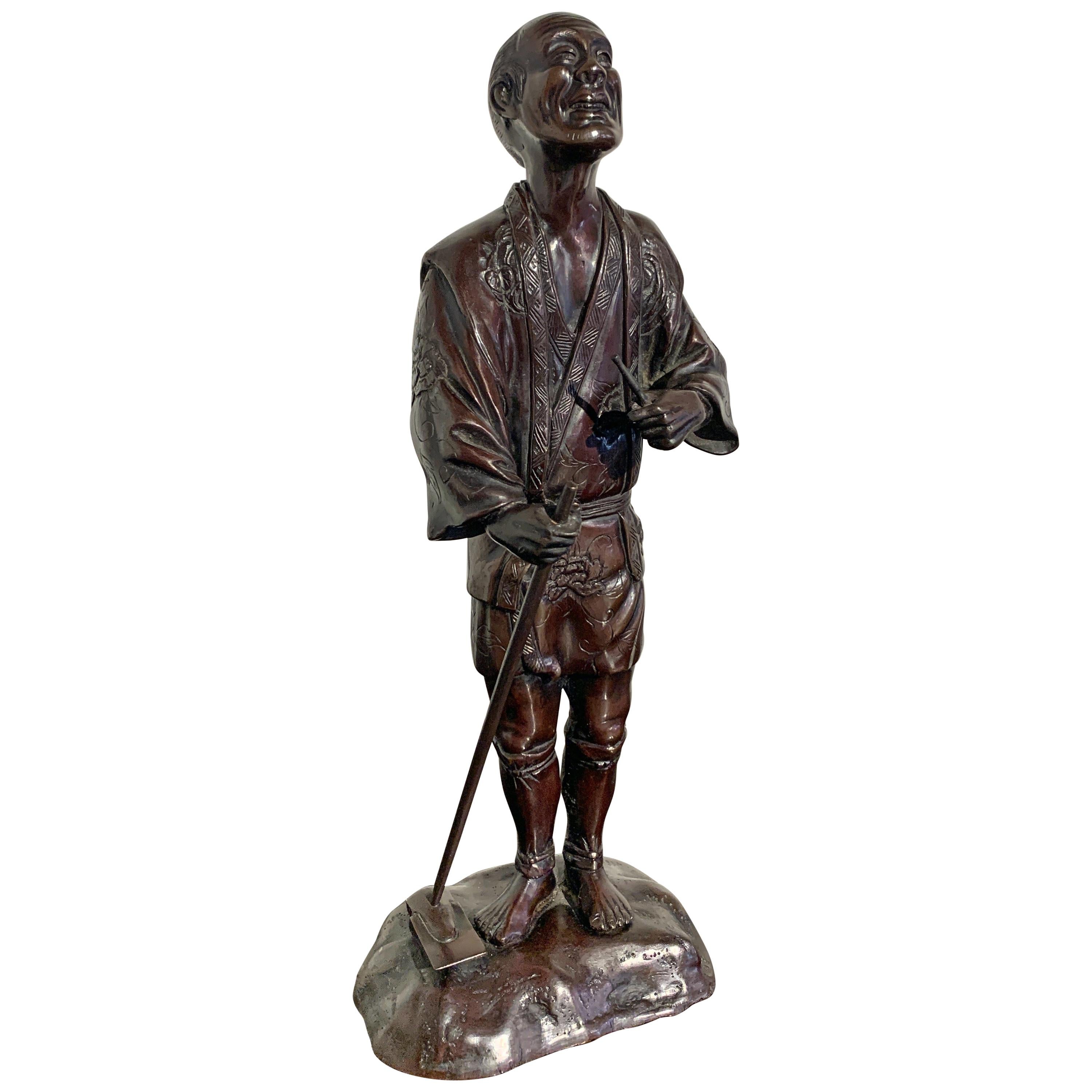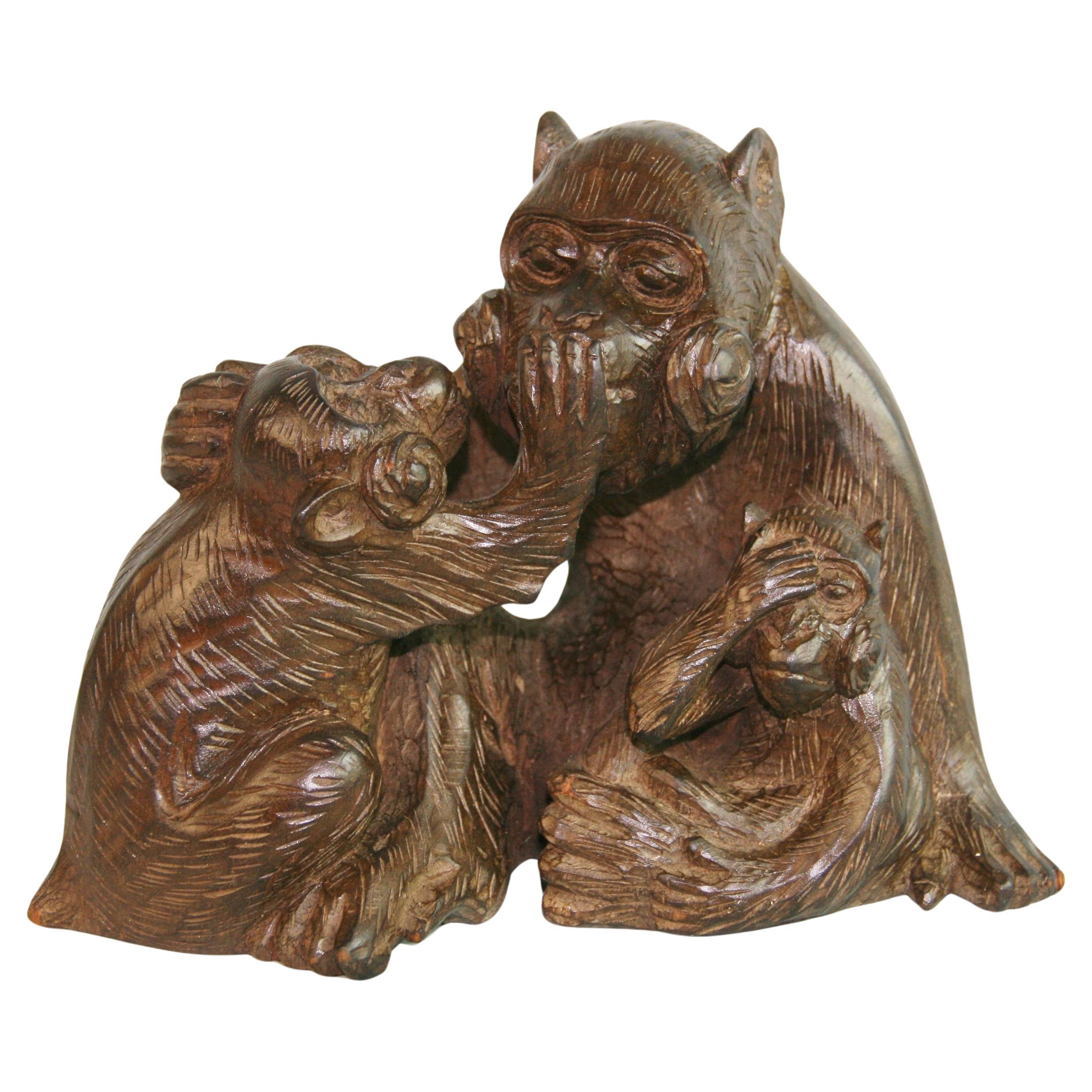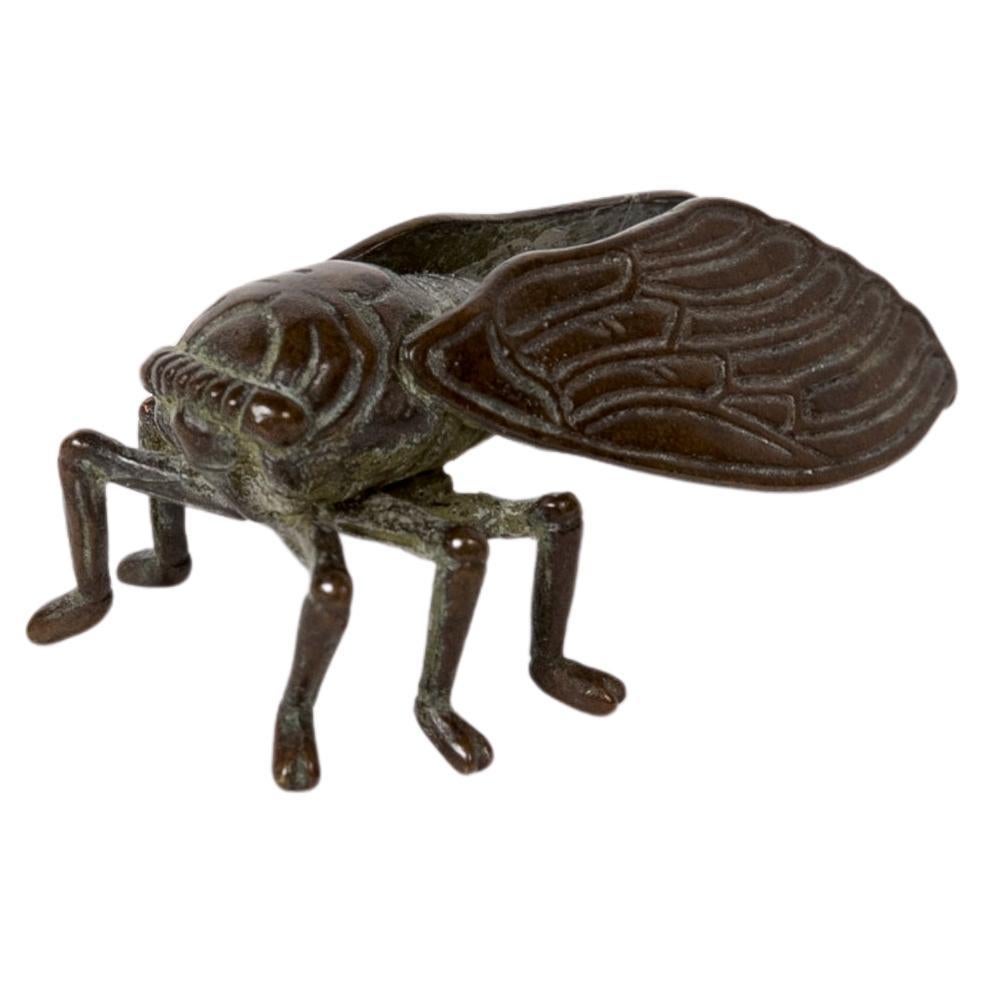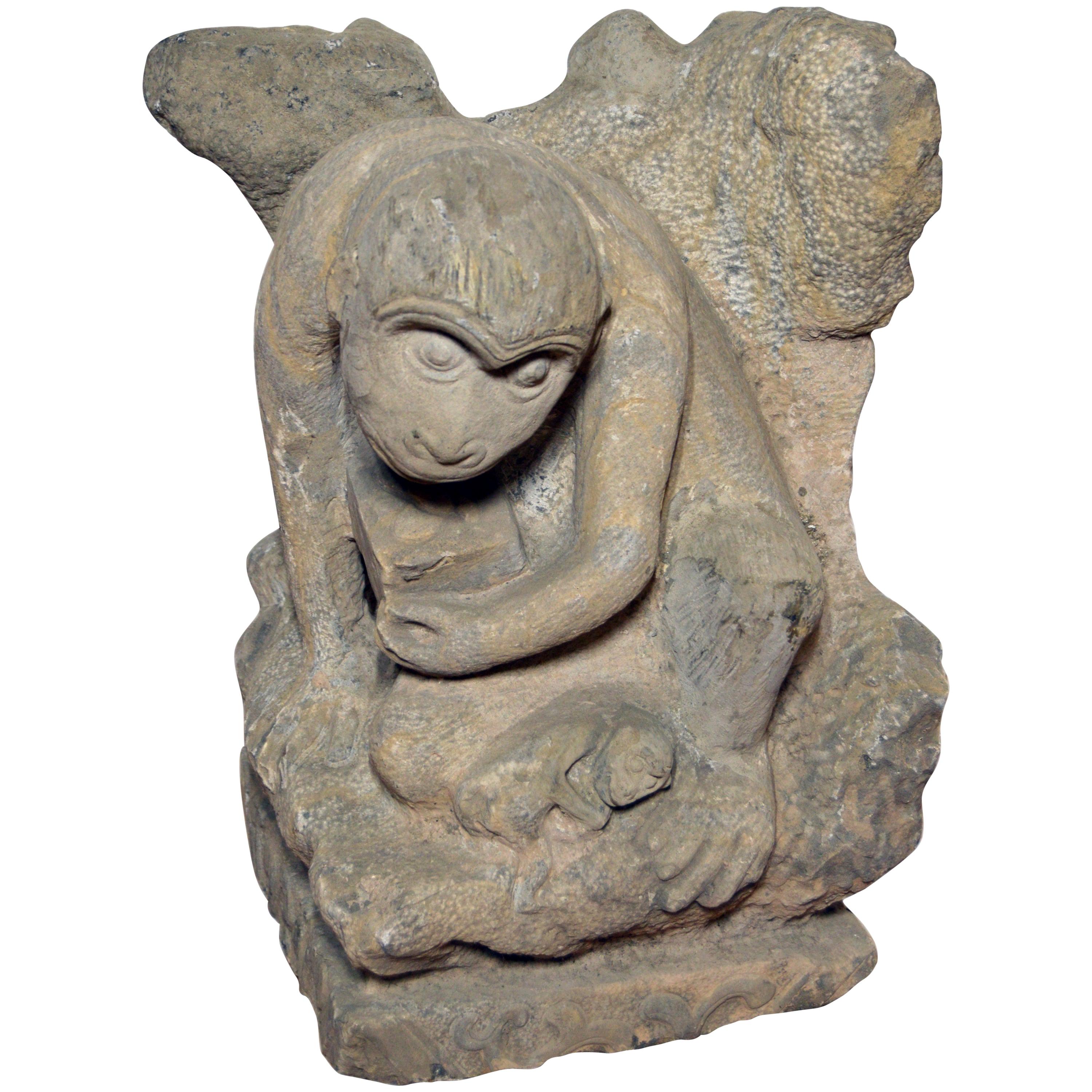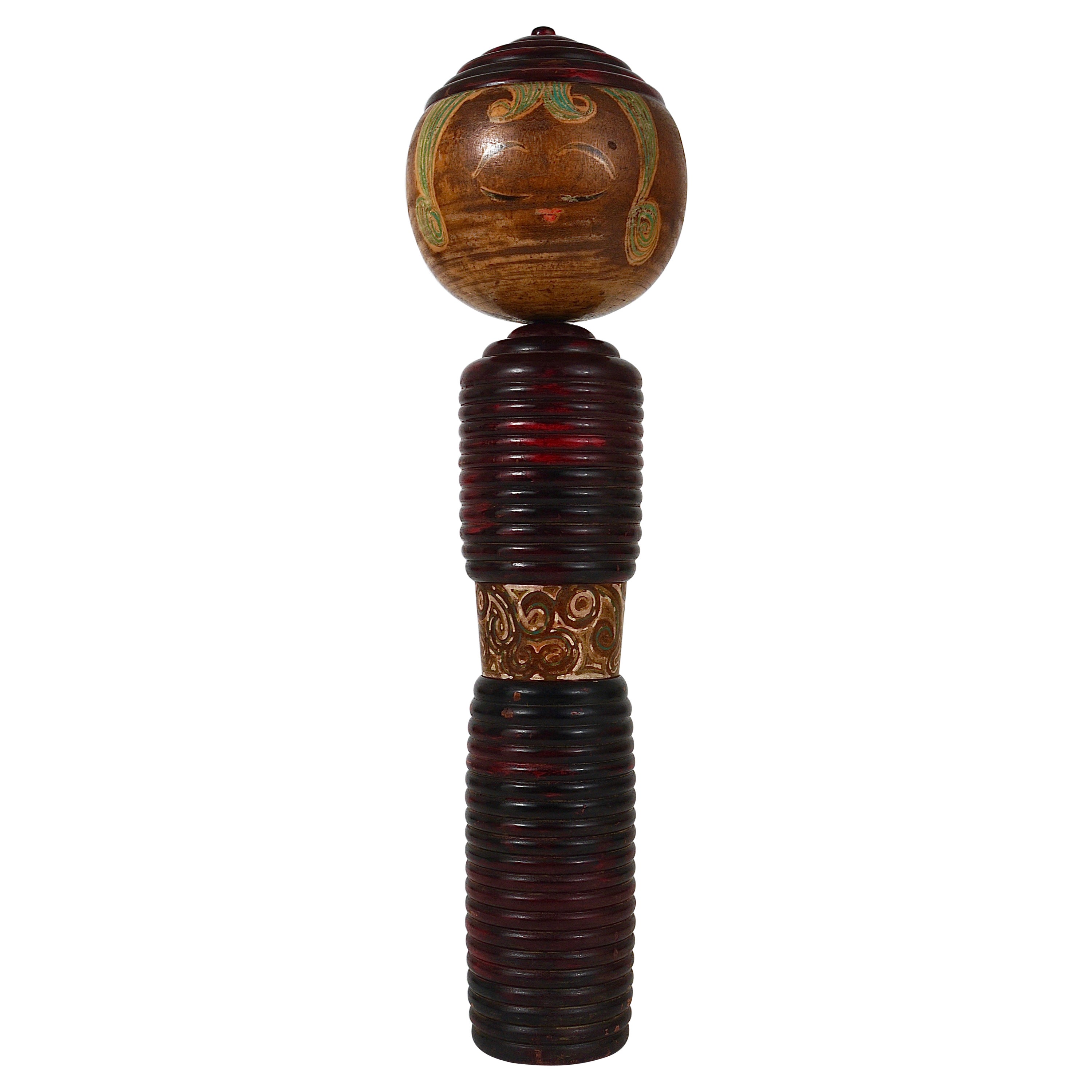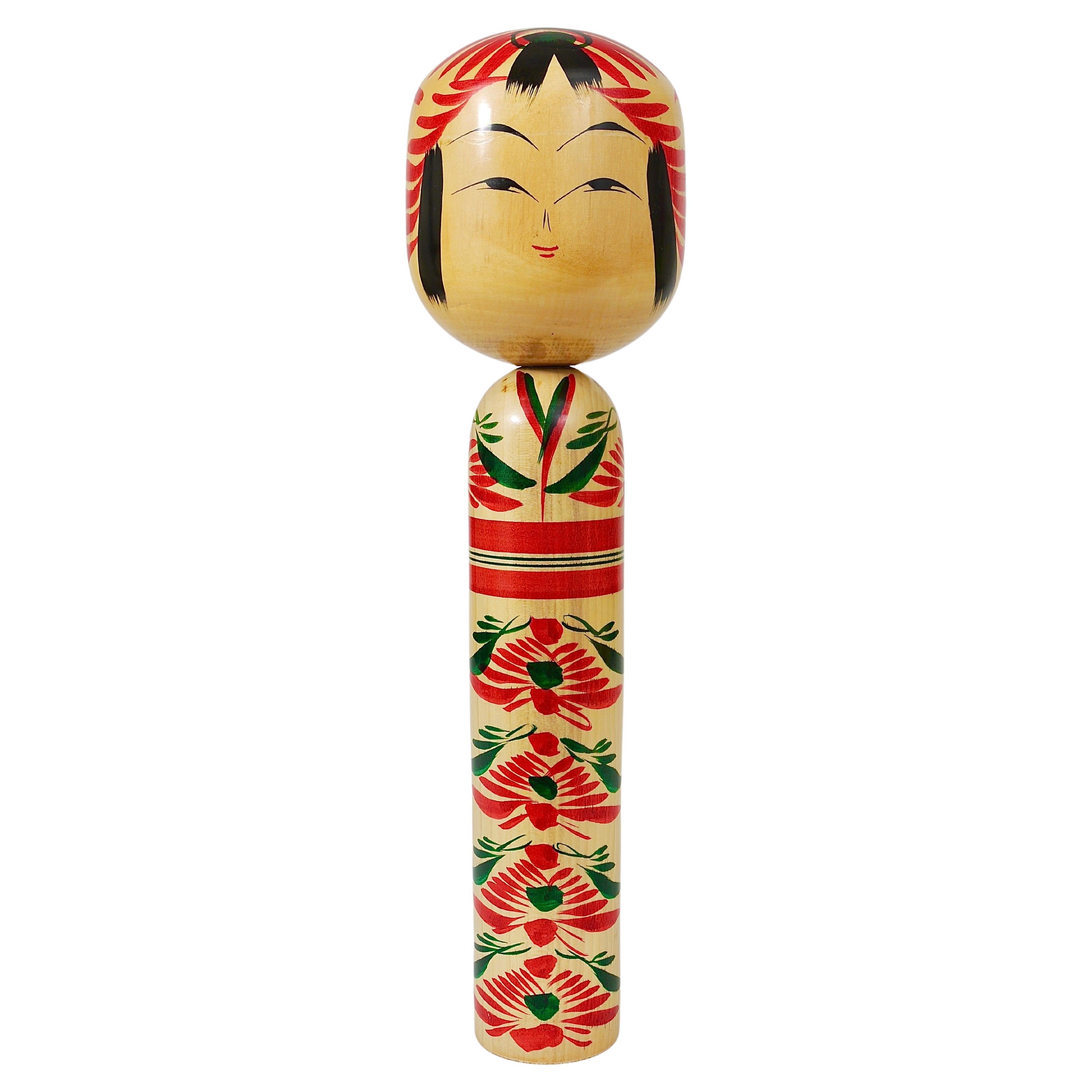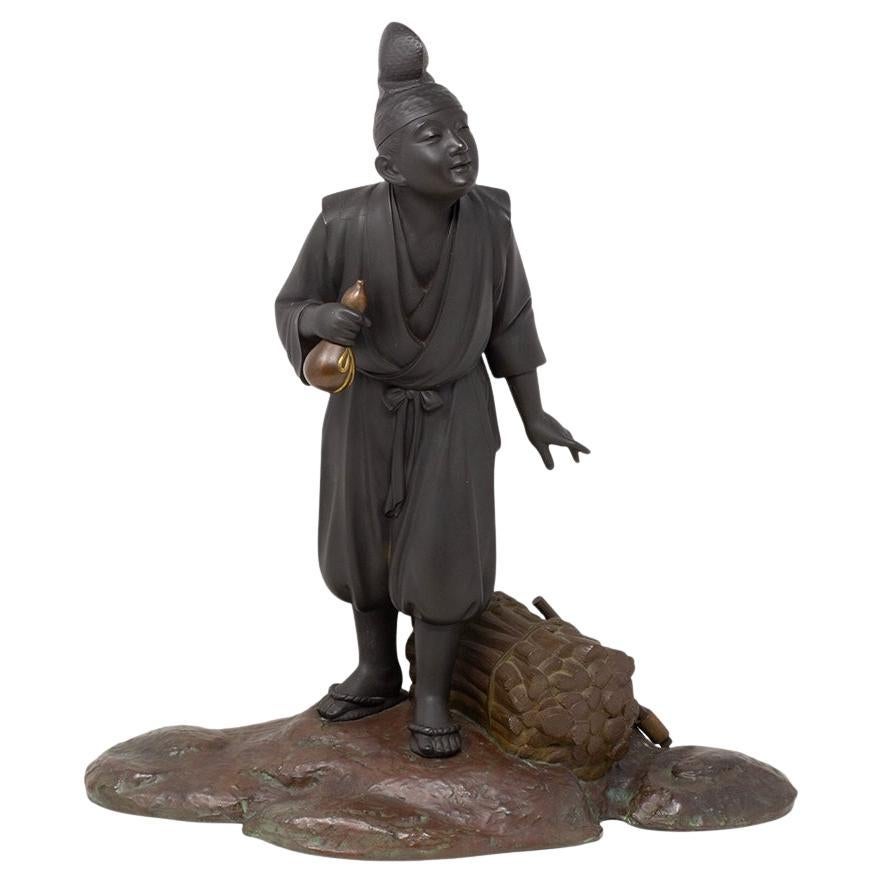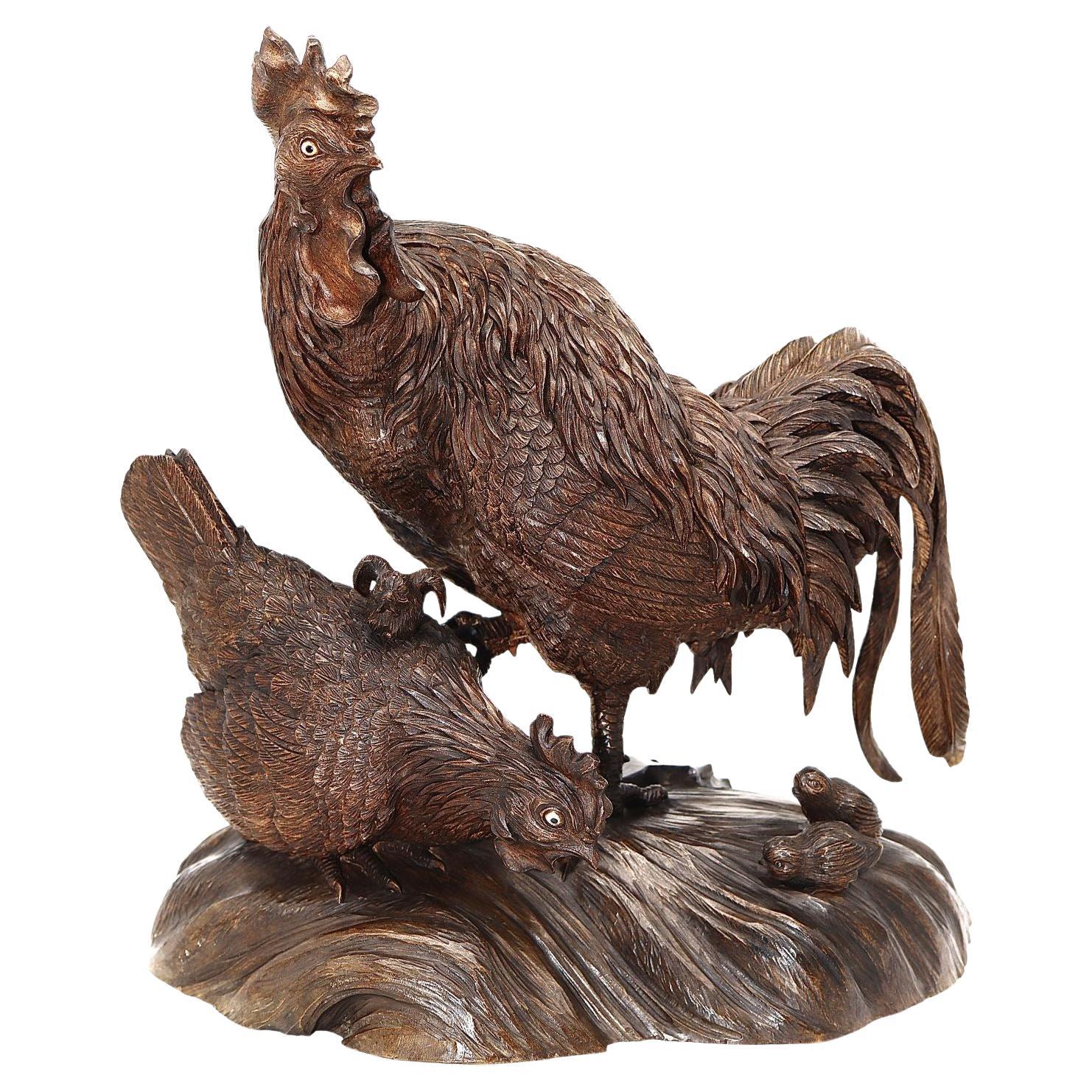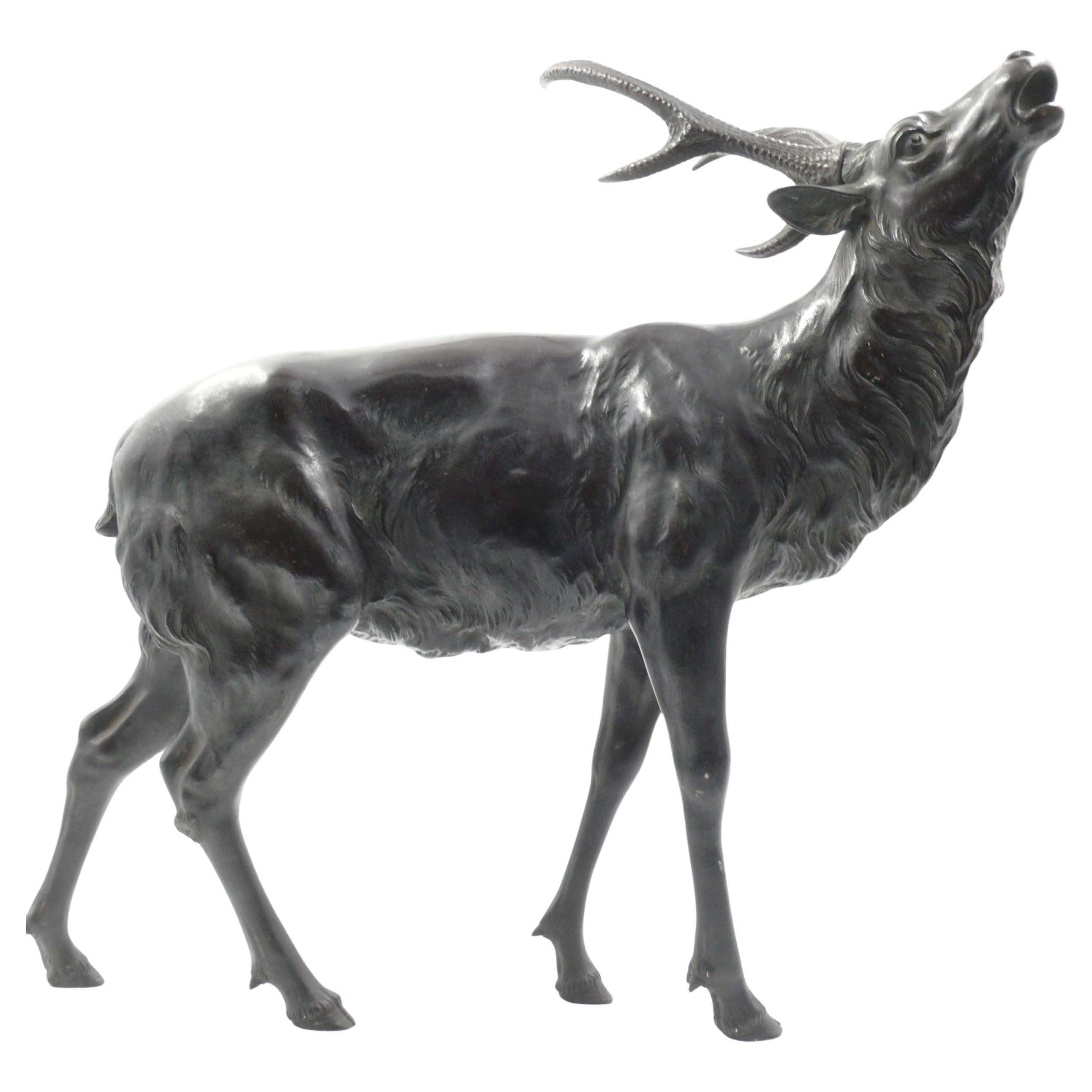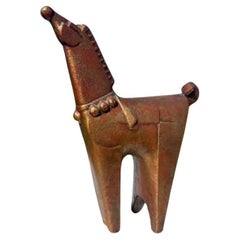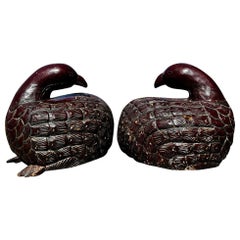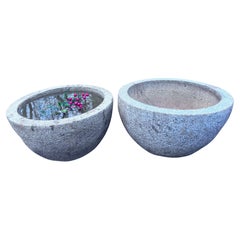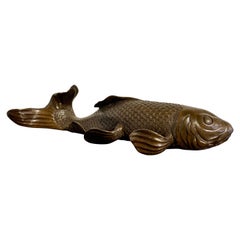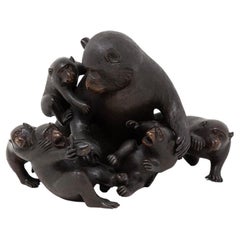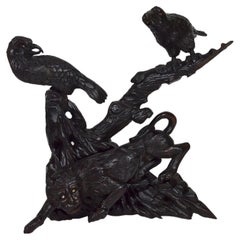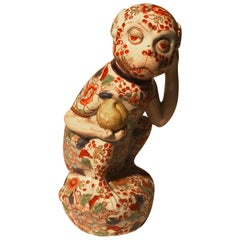
Japanese Big Red Enameled Porcelain Monkey Sculpture Okimono Signed
View Similar Items
Want more images or videos?
Request additional images or videos from the seller
1 of 11
Japanese Big Red Enameled Porcelain Monkey Sculpture Okimono Signed
$950List Price
About the Item
- Dimensions:Height: 11 in (27.94 cm)Width: 7 in (17.78 cm)Depth: 5 in (12.7 cm)
- Style:Taisho (Of the Period)
- Materials and Techniques:
- Place of Origin:
- Period:
- Date of Manufacture:1920
- Condition:Wear consistent with age and use.
- Seller Location:South Burlington, VT
- Reference Number:1stDibs: LU128928104833
About the Seller
5.0
Platinum Seller
Premium sellers with a 4.7+ rating and 24-hour response times
Established in 1990
1stDibs seller since 2015
2,386 sales on 1stDibs
Typical response time: 1 hour
Authenticity Guarantee
In the unlikely event there’s an issue with an item’s authenticity, contact us within 1 year for a full refund. DetailsMoney-Back Guarantee
If your item is not as described, is damaged in transit, or does not arrive, contact us within 7 days for a full refund. Details24-Hour Cancellation
You have a 24-hour grace period in which to reconsider your purchase, with no questions asked.Vetted Professional Sellers
Our world-class sellers must adhere to strict standards for service and quality, maintaining the integrity of our listings.Price-Match Guarantee
If you find that a seller listed the same item for a lower price elsewhere, we’ll match it.Trusted Global Delivery
Our best-in-class carrier network provides specialized shipping options worldwide, including custom delivery.More From This Seller
View AllJapanese Elegant Huge Horse Hand Cast, Gilt and Signed
Located in South Burlington, VT
Signed and in largest scale
Here's a beautiful and unique way to accent your indoor display space with this very unusual treasure from Japan.
This is a superb and attractive s...
Category
Mid-20th Century Japanese Showa Animal Sculptures
Materials
Iron
$300 Sale Price
49% Off
Japan Pair Antique Gilt Quail Sculptures Hand-Cast, Signed
Located in South Burlington, VT
Fine Pair (2) Quails In gilt finish with original signed labels JAPAN
Japan, a pair (2) of antique quail sculptures hand-cast, Taisho period.
Fine old carvings with traces of aged...
Category
Early 20th Century Japanese Taisho Sculptures and Carvings
Materials
Iron
Japan Huge Antique Pair Quail Sculptures Hand-Carved Red Lacquered
Located in South Burlington, VT
Fine Pair (2) Quails In A Monumental Size
Japan, a fine huge pair (2) of antique quail sculpture hand-carved and red lacquered, Taisho period.
Fine...
Category
Early 20th Century Japanese Taisho Sculptures and Carvings
Materials
Wood
$1,200 Sale Price
68% Off
Japan Pair Big Round Antique Stone Water Basin Planters Tsukubai
Located in South Burlington, VT
Great Pair (2) Of Large Round Stone Bowls/Planters
From our recent Japanese Acquisition Travels- comes this unusual pair of large round garden stone vessels with inset carved handl...
Category
Early 20th Century Japanese Taisho Sculptures and Carvings
Materials
Stone
Japanese Antique Lacquered Writing Table, Signed
Located in South Burlington, VT
Japan antique handmade, hand carved temple low writing table finished in red and black lacquer - signed.
A beautiful simple master work from an old private Japanese collection. Cr...
Category
Early 20th Century Japanese Taisho Sculptures and Carvings
Materials
Wood
$680 Sale Price
54% Off
Japanese Big Antique Bronze Temple Bell With Pleasing Sound, Signed, 25"
Located in South Burlington, VT
Japanese Large 25" Tall Patinated Bronze Temple Bell With A Resonating Sound Guaranteed to Please You
The inscribed donor's Kanji script makes this bell special.
For your meditat...
Category
Early 20th Century Japanese Showa Sculptures and Carvings
Materials
Bronze
You May Also Like
Japanese Bronze Okimono of a Carp, Taisho Period, Early 20th Century, Japan
Located in Austin, TX
An elegant Japanese cast bronze okimono of a swimming carp, Taisho Period (1912 - 1926), early 20th century, Japan.
The graceful fish portrayed realistically in motion, as if swimmi...
Category
Vintage 1920s Japanese Taisho Sculptures and Carvings
Materials
Bronze
Japanese Meiji Period Bronze Monkey Group Sculpture Okimono Shosai
Located in Newark, England
Featuring Seven Japanese Macaques
Form our Japanese collection, we are delighted to offer this Japanese Bronze Monkey Group by Shosai. The Japanese Bronze Group displaying a male father monkey and his infants playing around and being mischievous with Persimmon fruit. The monkeys modelled as Japanese macaque monkeys (snow monkey). The bronze okimono is beautifully patinated with a highly lifelike and naturalistic casting signed to the underside Shosai 正齊鋳. The Bronze group dates to the Meiji Period (1868-1912) circa 1885.
Japanese macaque (snow monkey) is a terrestrial Old World monkey species that is native to Japan. They are known as snow monkeys because some live in areas where snow covers the ground for long periods each year hence their nickname. No other non-human primate lives further north or in a colder climate than the snow monkey. Individuals have brownish grey fur, pinkish-red faces, and short tails. Two subspecies are known and their conservation Status is of least concern. In Japan, the species is known as Nihonzaru ニホンザル, 日本 (Japan/Nihon) and saru 猿 (monkey) to distinguish it from other primates, but the Japanese macaque is the only species of monkey in Japan.
The Japanese macaque features heavily in the religion, folklore, and art of Japan, as well as in proverbs and idiomatic expressions in the Japanese language. They are often seen in paintings, block prints and represented in all manner of carvings from Okimono to netsuke. Many of these art forms reside in the world’s most famous museums and collections, some of the most prominent pieces by artists such as Mori Sosen and Kawanabe Kyosai. In Shinto belief (Japan’s indigenous religion/nature religion) legendary mythical beasts known as raiju sometimes appeared as monkeys and kept Raijin (the god of lightning/storms) company. In another well known tale the three wise monkeys who warn people to “see no evil, hear no evil and speak no evil” can be seen depicted in relief over the door of the famous Tosho-gu shrine in Nikko.
Meiji Period was an era of Japanese history that spanned from 1868 to 1912. It was the first half of the Empire of Japan, when the Japanese people began to build a paradigm of a modern, industrialised nation state and emergent great power, influenced by Western countries and aesthetics. As a result of radically different ideas, the changes to Japan were profound and it affected the social structure, politics, economy, military, and foreign relations across the board. The period corresponded to the reign of Emperor Meiji and was preceded by the Keio era and was succeeded by the Taisho era.
Cultural Art during the Meiji Period was of particular interest to the government and they overhauled the art export market which in turn promoted Japanese arts via various world’s fairs, beginning in Vienna at the world fair in 1873. The government heavily funded the fairs and took an active role organising how Japan’s culture was presented to the world including creating a semi-public company named Kiritsu Kosho Kaisha (First Industrial Manufacturing Company). The Kiritsu Kosho Kaisha was used to promote and commercialise exports of Japanese art and established the Hakurankai Jimukyoku (Exhibition Bureau) to maintain quality standards. For the 1876 Centennial International Exhibition in Philadelphia, the Japanese government created a Centennial Office and sent a special envoy to secure space for the 30,000 items that would be displayed. The Imperial Household also took an active interest in arts and crafts, commissioning works by select artists to be given as gifts for foreign dignitaries further emphasising the high quality and importance of Japanese art. Just before the end of the 19th century in 1890, the Teishitsu Gigeiin (Artist to the Imperial Household) system was created to recognise distinguished artists. These artists were selected for their exceptionally high quality wares and talent in their own industry. Over a period of 54 years Seventy artists were appointed, amongst these were ceramicist Makuzu Kozan and cloisonné enamel artist...
Category
Antique Late 19th Century Japanese Meiji Sculptures and Carvings
Materials
Bronze
Asian Sculpture / Okimono with Lion and Crows, Japan, Meiji Era, circa 1880
Located in VÉZELAY, FR
Rare and important Japanese sculpture / statue / okimono in blackened and carved wood, depicting 1 lion, 2 birds (crows or other birds of prey) and 1 snake held in the claws of one o...
Category
Antique 1880s Japanese Meiji Sculptures and Carvings
Materials
Wood
$2,516 Sale Price
25% Off
Japanese Tokyo School Bronze Okimono of a Farmer, Meiji Period
Located in Austin, TX
A very fine and detailed Tokyo School cast bronze okimono (decorative sculpture) of a smiling farmer, Meiji period, late 19th century, Japan.
The e...
Category
Antique Late 19th Century Japanese Meiji Sculptures and Carvings
Materials
Bronze
Japanese Hand Carved Monkey Family Sculpture Hear, See and Speak No Emil
Located in Douglas Manor, NY
1276 Japanese hand carved hardwood monkey family sculpture.
Fine detail.
Category
Mid-20th Century Sculptures and Carvings
Materials
Hardwood
Japan bronze cicada sculpture okimono Meiji
Located in PARIS, FR
Bronze sculpture with dark brown patina of a cicada.
The cicada (in Japanese, semi) is considered as a symbol of humanity. Together with a praying mantis and a spider, they represen...
Category
Antique Late 19th Century Japanese Japonisme Sculptures and Carvings
Materials
Bronze
Recently Viewed
View AllMore Ways To Browse
Antique Porcelain Monkey
Antique Enamelware
Old Imari China
Arita Kakiemon
Large Monkey Sculpture
Royal Crown Derby China
Royal Crown Derby Imari
Red Stone Carving China
Monkey Ornament
White Monkey Porcelain
Porcelain Monkeys
17th Century Monkey
Antique Stone Monkey
Old Derby Porcelain
Meissen Imari
Johnson Bros
Royal Crown Derby Green
Meissen Monkey
